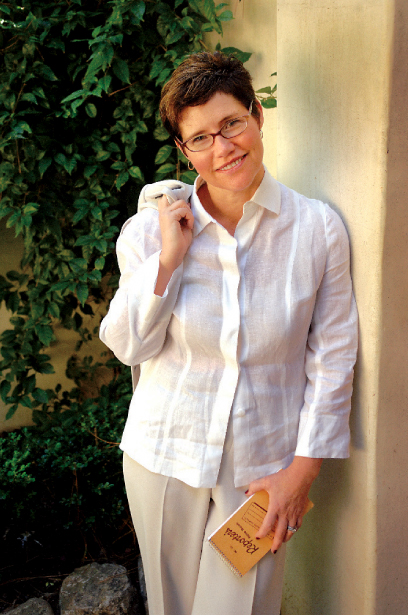Believe it or not, there was a time when “I’ll have a white wine” was a request rarely heard. Back in the 1970s, it was more likely that partygoers and bar patrons would ask for a martini, a highball or “Scotch rocks, please.”
Enter Robert Mondavi. Born in 1913 in Minnesota, the son of Italian immigrants moved with his family in 1923 to the Central Valley grape-growing locale of Lodi. Casual observers will note that Mondavi grew up with the wine industry. Business insiders maintain he grew America’s wine industry. That’s definitely the take of Julia Flynn Siler, a Wall Street Journal business reporter, Ross mother of two, and author of The House of Mondavi: The Rise and Fall of an American Wine Dynasty, published by Gotham Books last June.
“I tried to write it like a novel,” says Siler, looking relaxed with a ready smile while sitting on the back patio of Cafe Marmalade in Ross. “For sure the genre is narrative nonfiction.” Yet the 450-page book, the result of three years of reporting and writing, has all the ingredients of a Danielle Steel read: a brother-vs.-brother fistfight over a $5,200 fur coat leading to the breakup of the family business; a rock-and-roll-singing young lawyer who outmaneuvered the feared litigator and future San Francisco mayor Joseph Alioto; and numerous glamorous wine- and food-filled trips to Italy and Chile and back to the Napa Valley with the Baron and Baroness de Rothschild.
“In all, I spent over 500 hours interviewing over 250 people,” says Siler, “and traveled to Italy, Chile and New York’s Wall Street to get the accurate story.” She also spent, in her words, “too many” nights in an Oakville B and B in order to be near her sources, who included the adult children of Robert Mondavi (Michael, Timothy and Marcy) as well as Margrit, the winemaker’s second wife and the only Mondavi still working at the Robert Mondavi Winery, with whom she spent considerable time. “Of course I talked with Mr. Mondavi two or three times,” Siler adds, “but at the time he was in his early 90s and would lapse in and out of clear thought.”
A Brown University grad with an MBA from Northwestern and a master’s in journalism from Columbia, Siler still writes for the Journal: she’s interviewed Sir Richard Branson at 30,000 feet over the Caribbean in one of his Virgin Airways jumbo jets, and she journeyed to Scotland for a story on Dolly the sheep, the first mammal to be cloned from an adult somatic cell. (Her husband, Charlie, is an editor with Bloomberg News in San Francisco.)
Meanwhile, The House of Mondavi is in its fifth printing and has had a run of more than 100,000 copies. The story itself begins on Ellis Island in 1906 with the arrival of immigrants Cesare and Rosa Mondavi and concludes in a paneled boardroom in 2004 where control of the $1.3 billion dynasty is wrestled away in a corporate coup. As to why Mondavi family members, as well as other players integral to the empire’s rise and fall, were willing to talk to her, Siler is anything but coy.
“At first they were all reluctant because of a critical article on the saga I’d written for the Wall Street Journal,” she says. Yet in time, her persistence paid off. “Once stockholder lawsuits were settled, one of the so-called ‘raiders’ agreed to talk; then the Mondavis, in order to get their version known, consented to interviews.” If there’s a conclusion to be drawn from the story, Siler believes it was Robert Mondavi’s altruistic exuberance—helping to reopen the Napa Valley Opera House; creating Copia, the American Center for Wine, Food and the Arts; and establishing the Mondavi Center for the Performing Arts Center at UC Davis—that in large part led to the family dynasty’s demise.


